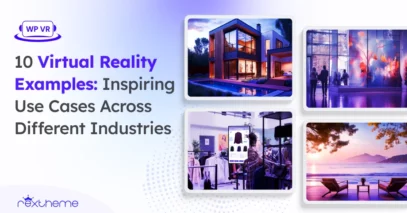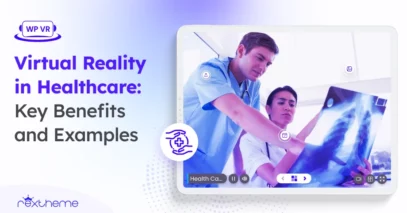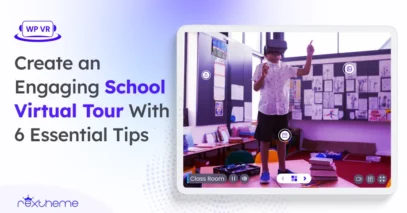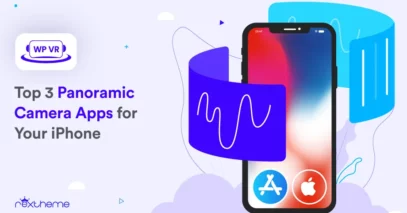![How To Create A Virtual Campus Tour To Attract Students Effectively [2025]](https://staging-rextheme.kinsta.cloud/wp-content/uploads/2022/09/How-To-Create-A-Virtual-Campus-Tour-Step-By-Step-Guide-407x221.jpg) How To Create A Virtual Campus Tour To Attract Students Effectively [2025]
How To Create A Virtual Campus Tour To Attract Students Effectively [2025]
Virtual Reality Articles
- Deals
- Guide
- Plugins
- Product Feed Manager For WooCommerce
- Real Estate
- Social Media
- Themes
- Uncategorized
- Update
- Virtual Reality
- WooCommerce
- WooCommerce Sellkit
- WordPress
- WP VR
![How To Create A Virtual Campus Tour To Attract Students Effectively [2025]](https://staging-rextheme.kinsta.cloud/wp-content/uploads/2022/09/How-To-Create-A-Virtual-Campus-Tour-Step-By-Step-Guide-407x221.jpg) How To Create A Virtual Campus Tour To Attract Students Effectively [2025]
How To Create A Virtual Campus Tour To Attract Students Effectively [2025]
![8 Important Benefits Of Virtual Reality In Tourism Businesses [2025]](https://staging-rextheme.kinsta.cloud/wp-content/uploads/2023/09/Benefits-Of-Virtual-Reality-In-Tourism-Businesses-407x214.webp) 8 Important Benefits Of Virtual Reality In Tourism Businesses [2025]
8 Important Benefits Of Virtual Reality In Tourism Businesses [2025]
![What is VR Training? Benefits, Best Practices & Examples [2025]](https://staging-rextheme.kinsta.cloud/wp-content/uploads/2025/02/What-is-VR-Training_-Benefits-Best-Practices-Examples-407x213.webp) What is VR Training? Benefits, Best Practices & Examples [2025]
What is VR Training? Benefits, Best Practices & Examples [2025]
![How To Create A Virtual Tour In Easy Steps- A Complete Guide [2025]](https://staging-rextheme.kinsta.cloud/wp-content/uploads/2025/01/How-To-Create-A-Virtual-Tour-In-Easy-Steps-A-Complete-Guide-407x213.webp) How To Create A Virtual Tour In Easy Steps- A Complete Guide [2025]
How To Create A Virtual Tour In Easy Steps- A Complete Guide [2025]
![Virtual Reality in Education: What’s The Future? [2025]](https://staging-rextheme.kinsta.cloud/wp-content/uploads/2024/12/Virtual-Reality-in-Education_-407x213.webp) Virtual Reality in Education: What’s The Future? [2025]
Virtual Reality in Education: What’s The Future? [2025]
![Guide To Creating Virtual Luxury Home Tours For Real Estate Success [2025]](https://staging-rextheme.kinsta.cloud/wp-content/uploads/2022/09/Virtual-Luxury-Home-Tours--407x213.webp) Guide To Creating Virtual Luxury Home Tours For Real Estate Success [2025]
Guide To Creating Virtual Luxury Home Tours For Real Estate Success [2025]
![What is Immersive Virtual Reality? A Beginner’s Guide to VR’s Full Potential [2025]](https://staging-rextheme.kinsta.cloud/wp-content/uploads/2024/12/Immersive-virtual-reality-407x213.webp) What is Immersive Virtual Reality? A Beginner’s Guide to VR’s Full Potential [2025]
What is Immersive Virtual Reality? A Beginner’s Guide to VR’s Full Potential [2025]
 10 Virtual Reality Examples: Inspiring Use Cases Across Different Industries
10 Virtual Reality Examples: Inspiring Use Cases Across Different Industries
 Virtual Reality in Healthcare: 12 Key Benefits and Examples
Virtual Reality in Healthcare: 12 Key Benefits and Examples
 Create an Engaging School Virtual Tour With 6 Essential Tips
Create an Engaging School Virtual Tour With 6 Essential Tips
![Using 360 VR Panoramas In 2024 [Beginner’s Guide]](https://staging-rextheme.kinsta.cloud/wp-content/uploads/2024/09/Panoramic-Photo-407x221.webp) Using 360 VR Panoramas In 2024 [Beginner’s Guide]
Using 360 VR Panoramas In 2024 [Beginner’s Guide]
 Top 3 Panoramic Camera Apps for Your iPhone
Top 3 Panoramic Camera Apps for Your iPhone